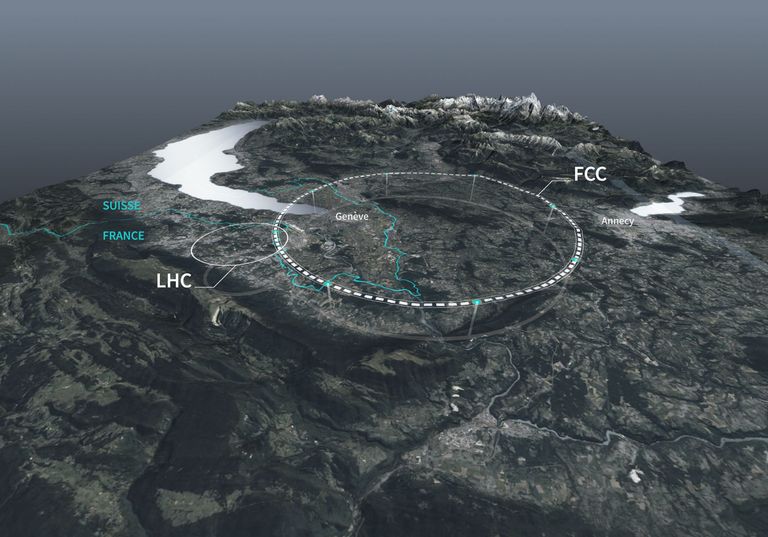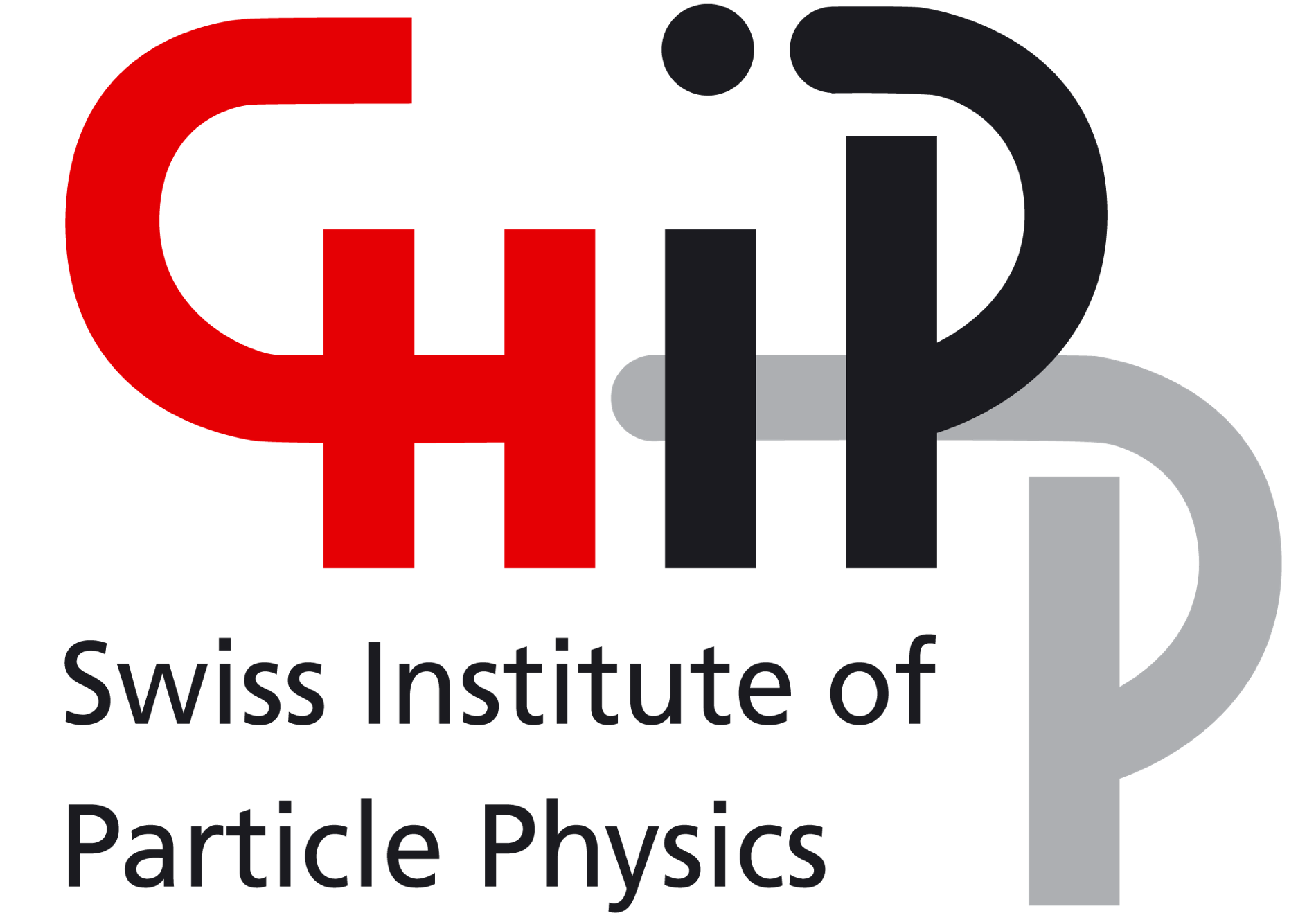The planners of the future are ready to go
CERN presents interim report of feasibility study for planned particle accelerator FCC
The international particle physics hub CERN in Geneva has big plans for the future. Literally. While its current flagship, the Large Hadron Collider (LHC), is scheduled to continue data taking until the 2040s, the international community of particle physics is already busy conceiving potential follow-up projects to complement the discoveries made at the LHC.

The largest and most ambitious of these is called FCC, for Future Circular Collider. Nearly all Swiss universities and research institutes as well as national institutions like Swisstopo are involved in planning and designing the different stages of the FCC. A feasibility study that is currently underway just passed an intermediate review by CERN’s governing body, the CERN Council.
Council delegates confirmed that at this moment, there is no technical showstopper – the plans for civil engineering, accelerator design and other technical aspects that need to be taken into consideration for an ambitious future project like the FCC all seem feasible at this stage and work on the study can continue. "We have made great progress in defining further details of the FCC," says Florencia Canelli from the University of Zurich and scientific delegate of the Swiss delegation to the CERN Council.
The feasibility study was started in 2021 in order to have the conclusions ready when the next round of European strategy deliberations about the priorities and future of particle physics in Europe kicks off. This strategy is an international process happening roughly every seven years that sets clear goals for projects into which the European particle physics community should invest time and effort. The current priorities set by this strategy are the full exploitation of the science potential at the Large Hadron Collider LHC, followed closely by a so-called Higgs factory to explore the properties of the Higgs boson discovered at the LHC as well as the electroweak sector, flavour physics and the physics of the top quark.
Different goals require different machines, and a Higgs factory calls for a collider that smashes electrons into their antiparticles, positrons, for much higher-precision measurements than are possible at the LHC. The Future Circular Collider is therefore planned in two stages – an electron-positron collider called FCC-ee – and, much further down the line, a mega-LHC that would collide hadrons with hadrons, which explains its abbreviation FCC-hh. Protons belong to the hadron family, as do heavy ions, both of which are accelerated in LHC runs nowadays. The feasibility study currently underway concentrates of the feasibility of the tunnel required for the new collider and its first incarnation, FCC-ee.
It’s an exciting time for particle physicists like Armin Ilg who is currently a postdoc at University of Zurich. His specialty is the innermost part of any future FCC detector, the vertex detector, but he is also an active member of early-career panels who give input to strategic questions about future projects. “We have the unique opportunity to work together on a common vision,” he says. After all, with an estimated date for first FCC data in the 2040s, it will be him and his colleagues who will actually work on the collider. While solving the mysteries of the Universe with the help of physics data is firmly in the centre of their focus, they are also concerned about sustainability and diversity issues. “FCC is in a highly creative phase right now,” he says. “We must take full advantage of that.”
One of the big advantages is the horizontal nature of the research and development efforts. Unlike previous projects, where detector concepts are set and R&D is mostly being done vertically within the concept, FCC and other future projects – for example proposed linear colliders – are organised in teams that focus on the technologies needed across the board. Learning from past experience and developing the best possible components for the high demands of future experiments is one of the key ideas of these informal collaborations. Ilg, for example, is an expert in a silicon sensor called MAPS, for monolithic active pixel sensor.
They are very small and very thin sensors that give an ultra-precise picture of the tracks of passing particles, where they are created and where they decay. MAPS are already being used in particle detectors like the ALICE experiment at the LHC and the future-collider detector developers work closely with experts of different technologies to get the most synergy from the development efforts.
While the detector developers are feeling the buzz, accelerator developers and tunnel experts are already in the middle of a hive of activity. The international board of the study looked at the same aspects for some 100 scenarios for the tunnel: where to put it, at what angle, with what circumference? What is the local geology like, what is the impact on the environment, can researchers get to the eight access points easily? How do cooling and power get to where they are needed and what are the best spots for the planned four experiments? They arrived at an optimal option of a 91-kilometre tunnel at a depth of 200 metres on average. “Over the course of the Feasibility Study, CERN has been working closely with local authorities in its host states France and Switzerland and this collaboration will continue to be crucial going forward,” it says on CERN’s website. The current preferred solution would pass underneath Lake Geneva itself.
“Of course people are concerned about the idea of a massive machine underneath their feet because of the implications it might bring. They are worried that housing prices go up or that some science building might spoil their view of the Alps. All these worries are valid and CERN is very actively addressing them in the communes in question,” Ilg explains. While he does not need convincing that the discovery potential of the FCC is enormous, he is happy to register support from Swiss authorities as well. He sees it as a chance to do things the right way – from a physics as well as an environmental and human point of view. “If we all work together we can make a lot happen,” he says. “And who knows which benefits FCC-ee or FCC-hh will bring to society in the long run?”
If approved, tunnel boring machines could start digging in the early 2030s and first collisions could happen in the mid-2040s. FCC-ee would run for approximately 15 years, after which the next stage, FCC-hh, could start in around 2070. That means that particle physicists would be busy for the next seventy years or so. The initial stage is estimated to cost 15 billion Swiss Francs.
Apart from planning the vertex detectors for future FCC experiments, Swiss institutes are also involved in activities like developing FCC-ee accelerator components. This is done by the Swiss Accelerator Research and Technology collaboration CHART, whose members are PSI, EPFL, ETH Zurich, University of Geneva and CERN. Swiss theorists are busy preparing precise theoretical calculations; while their experimental colleagues are currently developing silicon sensors with precise timing capabilities and the estimation of discovery potential for long-lived particles that travel a considerable distance in the detectors before decaying. All in all some 150 institutes from 30 countries are busy planning for an FCC future.
Barbara Warmbein
Contact
Swiss Institute of Particle Physics (CHIPP)
c/o Prof. Dr. Ben Kilminster
UZH
Department of Physics
36-J-50
Winterthurerstrasse 190
8057 Zürich
Switzerland


